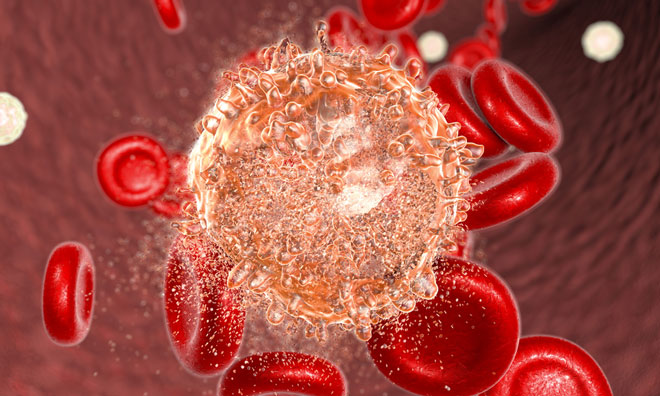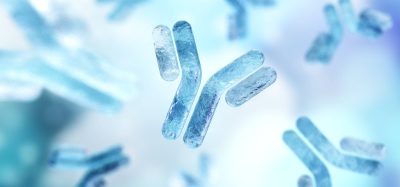New cancer drug tested in mice may benefit certain leukaemia patients
Posted: 12 June 2017 | Niamh Marriott (Drug Target Review) | No comments yet
Almost 6,000 new cases of acute lymphoblastic leukaemia, or ALL, are expected to be diagnosed this year in the United States. The blood cancer can affect both children and adults.

Scientists have found up to 30% of adult ALL patients have what’s called a Philadelphia chromosome, where two segments of chromosomes have aberrantly fused together. (The fusion chromosome is much less common in children.) Adult ALL patients exposed to standard treatments often see high relapse rates, and treatment-related deaths remain high. But researchers at Huntsman Cancer Institute (HCI) at the University of Utah have discovered new science that could provide better therapeutic options for patients.
In the Leukaemia study, HCI scientists learned how to inhibit and override the negative activity of this chromosome. The findings could possibly lead to future novel drug treatments.
Srividya Bhaskara, PhD, HCI investigator and assistant professor of radiation oncology at the University of Utah, led the study. She says the ALL cancer cells containing the Philadelphia chromosome are addicted to repairing DNA.
“Repairing DNA may sound like a good thing when you’re talking about healthy cells,” she explains, “But in this case it’s a bad thing. When you treat these leukaemia cells with chemotherapy, you want DNA damage to accumulate so the cancer cells will die. But because the Philadelphia chromosome continually causes repair, these cells don’t retain enough DNA damage to die. Essentially, they resist any kind of drug you use on them. So we had to find a new way to overcome this DNA repair addiction.”
Bhaskara says the Philadelphia chromosome promotes repair through numerous proteins. But putting together a cocktail of drugs to inhibit them all would likely be too toxic and affect normal cells. So Bhaskara focused on two specific proteins she found were directly involved in DNA repair, called histone deacetylases (HDAC) 1 and 2.
Inhibiting activity
She then collaborated with a company to make a drug that inhibits HDAC1,2 activity. After a comprehensive analysis of how the drug worked, Bhaskara tested the HDAC1,2 inhibitor in patient samples and mice and saw encouraging results, either alone or in combination with a chemotherapy drug called doxorubicin. (Doxorubicin is one of the components of the chemotherapy cocktail regimen currently used for Philadelphia chromosome-positive ALL patients). The drugs broke down the central hub of DNA repair, and the HDAC1,2 inhibitor actually reduced different repair protein functions.
“This inhibitor can work at multiple steps and at multiple levels of repair without causing major toxicity,” says Bhaskara. “The treated mice didn’t get sick from the drug, and we did not see any apparent toxic side-effects in them. And when the drug was combined with a low concentration of doxorubicin, it had additional therapeutic benefits.
We actually show in the patient-derived mouse models that using the combination of drugs, or HDAC1,2 inhibitor alone, is sufficient to decrease the leukaemia load.”
Leukaemia is a white blood cell disease where the body produces too many white and not enough red blood cells. When the mice in this study were treated with the HDAC1,2 inhibitor or the HDAC1,2/doxorubicin combination, their bone marrow started turning from pale to red, indicating the white blood cells were being replaced with red blood cells.
Trial results
In mouse models, a 50-70% reduction in leukaemia was observed with either HDAC1,2 inhibitor alone or when the inhibitor was used with doxorubicin. Bhaskara says this kind of decrease can give a patient several more years of survival.
In addition, the repair proteins identified by the Bhaskara Lab can also be used as potential biomarkers to predict a patient’s response in the clinic.
Bhaskara is encouraged and excited by the findings and their future implications. “We completely nailed down how the HDAC1,2 inhibitor affects DNA repair,” she says. “This is so important, not just for this cancer, but any cancer that is repair-addicted. We know there is a specific type of lymphoma that is also repair-addicted.”
Future pipelines
The next steps will include initiating human clinical trials, which are now being discussed between Bhaskara’s team and appropriate clinical and pharmaceutical partners.
Related topics
Chemotherapy, Genetic Analysis
Related conditions
Leukaemia
Related organisations
Huntsman Cancer Institute
Related people
Srividya Bhaskara






